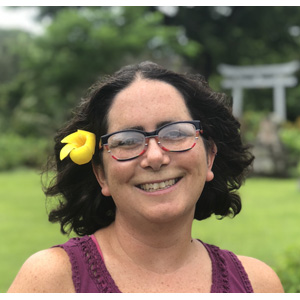Is DC’s Anacostia River on the Rebound and Safe for Swimming?
 To the Point provides insights from AU faculty experts on timely questions covering current events, politics, business, culture, science, health, sports, and more. Each week we ask one professor just one critical question about what’s on our minds.
To the Point provides insights from AU faculty experts on timely questions covering current events, politics, business, culture, science, health, sports, and more. Each week we ask one professor just one critical question about what’s on our minds.
Swimming in the Anacostia River was first banned in 1971 due to safety concerns about water quality. Since then, Anacostia Riverkeeper and other local advocacy groups have worked to improve the water quality through monitoring, trash cleanups, green infrastructure, and stormwater education and advocacy.
In 2018, the DC Department of Energy and Environment determined the water quality was high enough to allow limited swimming events, and Saturday, September 23, marked Splash!, the first permitted swim in the Anacostia River in more than 50 years. Though the event was cancelled because of torrential rainfall, it had nothing to do with water safety: in the days before the swim, the water quality results came in four times below EPA recreational standards.
But this got us thinking. What do these water quality results really mean, and is the river really safe for swimming and other recreational activities? How bad was the pollution, and how has the river come so far? Associate Professor of Environmental Science Karen Knee has been conducting research on water quality for almost 20 years. We asked her to weigh in.
Is DC’s Anacostia River on the Rebound and Safe for Swimming?
Let me start with a confession: I swim in water of questionable quality. Growing up, I jumped into an algae-green pond at a local county park during a friend’s birthday party. I have swum in the Delaware, Hudson, and Choptank Rivers, and this summer I accomplished a long-term goal of swimming across Chesapeake Bay. During the pandemic, when pools and public beaches were closed, my daughter and I took to Indian and Paint Branch creeks near our home in Greenbelt, Maryland. We avoided swimming after rainstorms and kept our heads out of the water. The joy of being in the water was worth the potentially increased risk of gastro-intestinal illness, and, anyway, neither of us ever got sick.
When we talk about recreational water quality, what we’re mainly talking about is fecal indicator bacteria. These bacteria live in the human digestive tract and are present at high concentrations in sewage. Although these specific bacteria don’t usually make people sick, they serve as a proxy for all the disease-causing microorganisms that sewage carries with it. Water with fewer than 126 E. coli bacteria per 100 milliliters is considered safe for swimming, and water with a higher concentration is considered unsafe. This cutoff is based on epidemiological studies that determined a statistical correlation between E. coli concentration and risk of gastro-intestinal illness.
The Clean Water Act and the efforts of federal, state, and local government and nonprofits have led to major improvements in the health of the Anacostia River. The most recent State of the Anacostia River Report Card, prepared by the Anacostia Watershed Society, noted that sewage overflows have decreased by 90 percent thanks to the Anacostia tunnel. Some locations, including Kingman Island where the Anacostia River swim will be held, have E. coli concentrations in the safe range most of the time. Unfortunately, many other locations consistently exceed the limit, and often have E. coli concentrations in the thousands or higher.
The water quality in the Anacostia today is better than it used to be, but still not great. So why plunge into its murky depths? Swimming in a local river or bay is a powerful way to connect with our beautiful, damaged, living world. And to me, that connection is worth it.
About the Author

Associate Professor of Environmental Science and Department Chair Karen Knee focuses on research centered around two main themes: Understanding how human activities like oil and gas extraction, mining, agriculture, and urban development affect water quality; and using the natural tracers radium and radon to characterize environmental processes like groundwater seepage, mixing, and gas exchange. She loves collaborating with other researchers and doing field work in interesting locations such as Ecuador, Hawai`i, Saipan and American Samoa, as well as closer to home in the DC area. She lives in Greenbelt, MD, with her wife, daughter, two dogs, and a cat, and in my spare time she enjoys swimming, hiking, reading, cooking, and traveling.
For more information, visit the Knee Ecohydrology Lab at American University website.
